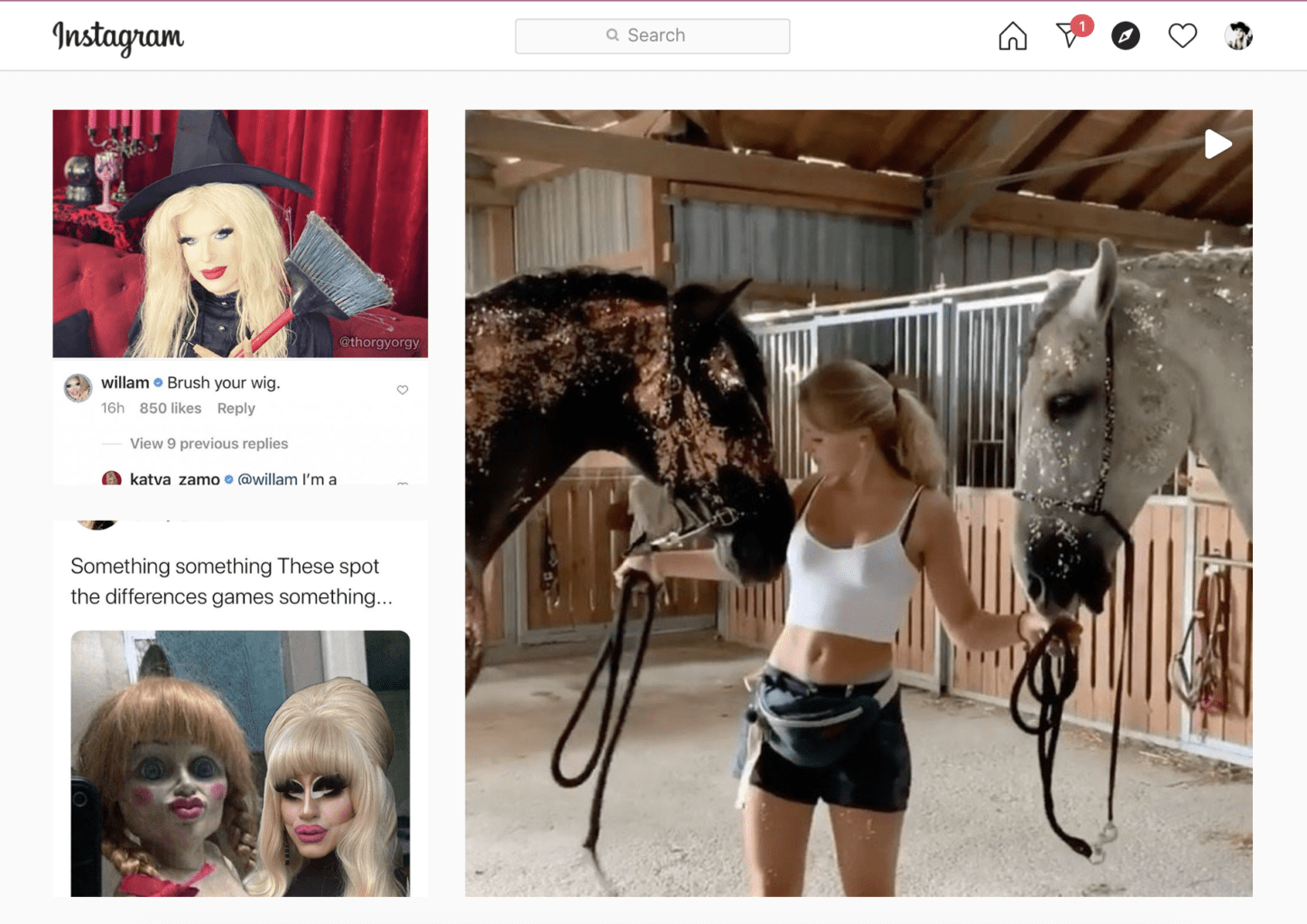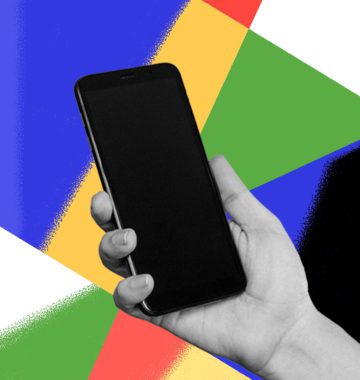This article was updated on September 30, 2021.
Every social media manager has found themselves frustrated at being thwarted by social media algorithms. They’re a huge pain in the butt.
We create great content, we write engaging posts about it and fill them with gorgeous visuals, and then nobody sees them. Why? Because the network’s algorithmic timeline only showed that content to about 6.4% of your page’s total followers!
Post Contents
Let’s first look at algorithms themselves. An algorithm is a clearly defined and calculated repeatable process, most often used by computers to solve problems.
Social media giants like Facebook, Twitter, Instagram, and Pinterest use algorithms to attempt to predict what their users enjoy and want to see more often, based on how they engage with similar content within their platform. Each time a friend, family member, or page you follow publishes a piece of content, algorithms get to work analyzing it.
These algorithms analyze all kinds of data, from which posts you like or share, to what hashtags are associated with that content, to how long you spend reading a post or an article that you clicked on.
The results are used to assign rankings to future content published by sources you follow, thus deciding which content deserves to appear in your personal news feed or timeline. This is also how social media apps recommend fresh and potentially desirable content, like Instagram’s Explore page.

Instagram has correctly identified my interests as horses and drag queens.
This algorithmic timeline – what you see each time you open a social app – is the result of a buzzing hive of algorithms, working together to show you what the social networks hope is content you’ll love every time you log into your account.
The reasoning behind it is that you’ll likely enjoy your social media experience more if you are only shown things you want to see, and you’ll be more inclined to return for more. Your satisfaction racks up more valuable usage hours within your demographic (age, gender, etc.), which the company can use in selling ads.
Social media is a critical piece of your digital strategy! Get the full scoop in Everything You Need to Know About Social Media SEO!
Most social media networks offer up little information about their algorithms (like this vague article released by Facebook), so it can be difficult to wrap your head around what it all means for your business’ content.
To help you understand how social media algorithms work, here’s a classic Forge and Smith-style analogy.
The algorithmic timeline in real life
Let’s pretend that the algorithmic timeline is a TV channel guide. (Let’s not call it Netflix, but let’s recognize that we’re basically talking about Netflix and its own algorithm here.)
Pam is watching TV on a Saturday afternoon. She looks through the channel listings and sees a Western sitcom that sounds good. She puts on that show, and it’s so funny that she watches three episodes in a row.
After that, she returns to the channel listings. She picks a show called Whisker Wars that sounds like it’s about cats, but it turns out to be a docu-series about men with big beards. Not in the mood for follicle follies, she returns to the channel listings.
From there, she watches the local news to see if there’s any coverage of the wiener dog races. Five minutes later she switches to a movie about a ballet dancer trying to make it in New York, and watches it all the way through.
Throughout her interactions with the channel listings, Pam is shown all kinds of options that she doesn’t watch: reality shows, sports, home and garden shows, cooking shows, major news broadcasts, BBC dramas, and more.
The next day Pam is back to her TV (hey, it’s the weekend). This time, the options are awfully specific. They contain 15 different Western shows plus the first entire season of the one she watched yesterday, some Western movies, shows about horses, a handful of regional news broadcasts, musical-themed TV shows, talent competition shows, and dance movies ranging from cheerleading and hip hop to ballet and salsa.
It also offers her a movie about Lady Gaga, because Gaga’s marketing team paid for that movie to be shown to people with an interest in dancing and singing.
On this day, Pam watches five Western shows. Four of them are dark and gritty, and one is funny. She watches three musical shows, all of them dramedies, and two movies about dancers who have to step outside their social/racial/economic comfort zones in order to become better dancers.
When Pam gets home from work on Monday, the listings now offer her gritty Western TV shows, a few Western comedies, the first season of that funny Western show, musical dramedies, and various dance movies featuring a strong and sassy female lead who has to learn a different style of dance to find herself/overcome a traumatic incident/find true love/get into that dance school.
The channel listings have also stopped showing her BBC dramas, sports, major news broadcasts, and documentaries. In their place are odd-sounding shows such as “How to Choose the Perfect Pair of Cowboy Boots”, “10 Tips for Tractor Maintenance”, and “Where to Buy Dance Pants in Vancouver”.
Algorithmic timelines only show users the content that the algorithms have decided that they want to see, and for the rest we have to visit each friend, family member or page individually to opt into seeing their content.
If you can see problems with the way this data is analyzed, you’re not alone. There are countless factors that can contribute to a like, share, or comment (or not doing any of the above), as well as user behaviour when accessing content on social media.
For example, we often like our family members’ photos or posts to make that person feel good (and to make sure we still get invited to Christmas dinner). That doesn’t mean that we want to see every photo our grandpa posts of his six cats.
We might read a few articles on a topic that we don’t like or that doesn’t interest us because someone shared them with us and asked us to read them, or to find the answer to a question that came up over drinks at the pub.
Similarly, we might bounce (leave the page without taking any actions) from an article that we really wanted to read for any number of reasons: slow page load due to a bad service area, dropping our phone, or maybe something really important came up in the real world.
We could really like that particular kind of content and want to see more, but environmental factors that social media algorithms couldn’t possibly know about got in the way.
Another downside to the algorithmic timeline is that it doesn’t take into consideration the importance of browsing. In the same way that we walk into a book store or library, browse the titles, and read the book jackets to find something new to read, exposure to a wide variety of content on different topics and from different sources facilitates a broad human experience.
If you want to learn more about Facebook’s algorithms, the article from Slate linked in this post gives some truly eye-opening insights.
Regardless of accuracy, and despite their flaws, ever-changing algorithmic timelines are a reality that social media managers need to deal with on a daily basis. You want to get your business’ content seen and engage with your customers, otherwise you wouldn’t be on social media.
But how do you accomplish that when you haven’t yet built up a following of people who engage with your posts, and the algorithms always seem to be working against you?
There is no simple answer. Successful social media is a combination of quality content and human interest. That said, there are things you can do to both appease the algorithms and to extend your reach.
- Only share content that is helpful, relevant, and interesting. Don’t post on social media just for the sake of posting. Unfollows can come pretty quickly when accounts feel like they’re spamming their audiences.
- Make sure that all of your website’s pages only use optimized images to ensure a speedy page load when someone accesses them from social media. You want to create a positive experience that the person wants to repeat. Page load times are also among Google’s ranking factors, and slow loads can’t harm your SEO. Need help? Check out our blog on optimizing images!
- Encourage likes, comments, and shares within your posts! Incentivize your visitors to engage with your brand, and don’t be afraid to ask outright. Suggest that they tag a friend who would appreciate the post, or that they share the content to their own network. Social media is about building a community, so take time to respond to comments, ask questions, and have fun with your audience.
- Ask questions. Don’t just talk at people in your caption copy – talk to your followers and the people who stumble upon your content through discovery features. Show interest in their opinions. Encourage feedback. You can use this information to improve your customer service and products, as well as to plan future content. Common questions in your comments make great blog topics.
- Share your social media profiles on other profiles, via email, and include visible social sharing buttons and social callouts on your website’s pages. Someone who followed you on Facebook five years ago might not know you now have Instagram or YouTube. Take every available opportunity to put your social media profiles out where people can discover them.
- Have a hashtag strategy. Every single social media platform now uses hashtags to categorize your content. With Instagram, the algorithm doesn’t know what your image is about — it’s a photo! Hashtags tell it how to quickly sort your content, so that it can be suggested to an audience that’s shown interest in that topic. Most platforms now also allow people to follow hashtags and use your caption copy to categorize your content. So do your homework, and learn to be a hashtag scientist.
- Remember that it’s all about the user, not about you! Today’s social media networks are flooded with promotional spam. If you want to stand out and be heard, make sure that each post brings value to the user – your potential customer. Maintain a healthy content balance on all of your networks, and ask yourself each time you post if what you’re sharing benefits the customer, or just your business.
- Read all you can about how each platform’s algorithm works. Although the companies themselves are vague, industry experts have put together awesome articles that will do the trick. Check out Later’s guides to the Instagram and TikTok algorithms, Hootsuite’s guide to the Facebook and Twitter algorithms, and Sprout Social’s guide to the LinkedIn algorithm.
Do you have another fun analogy for the algorithmic timeline? We’d love to hear it! Reach out to us on Facebook or on Twitter.
For the record, Whisker Wars is actually a cool show that I did watch.






